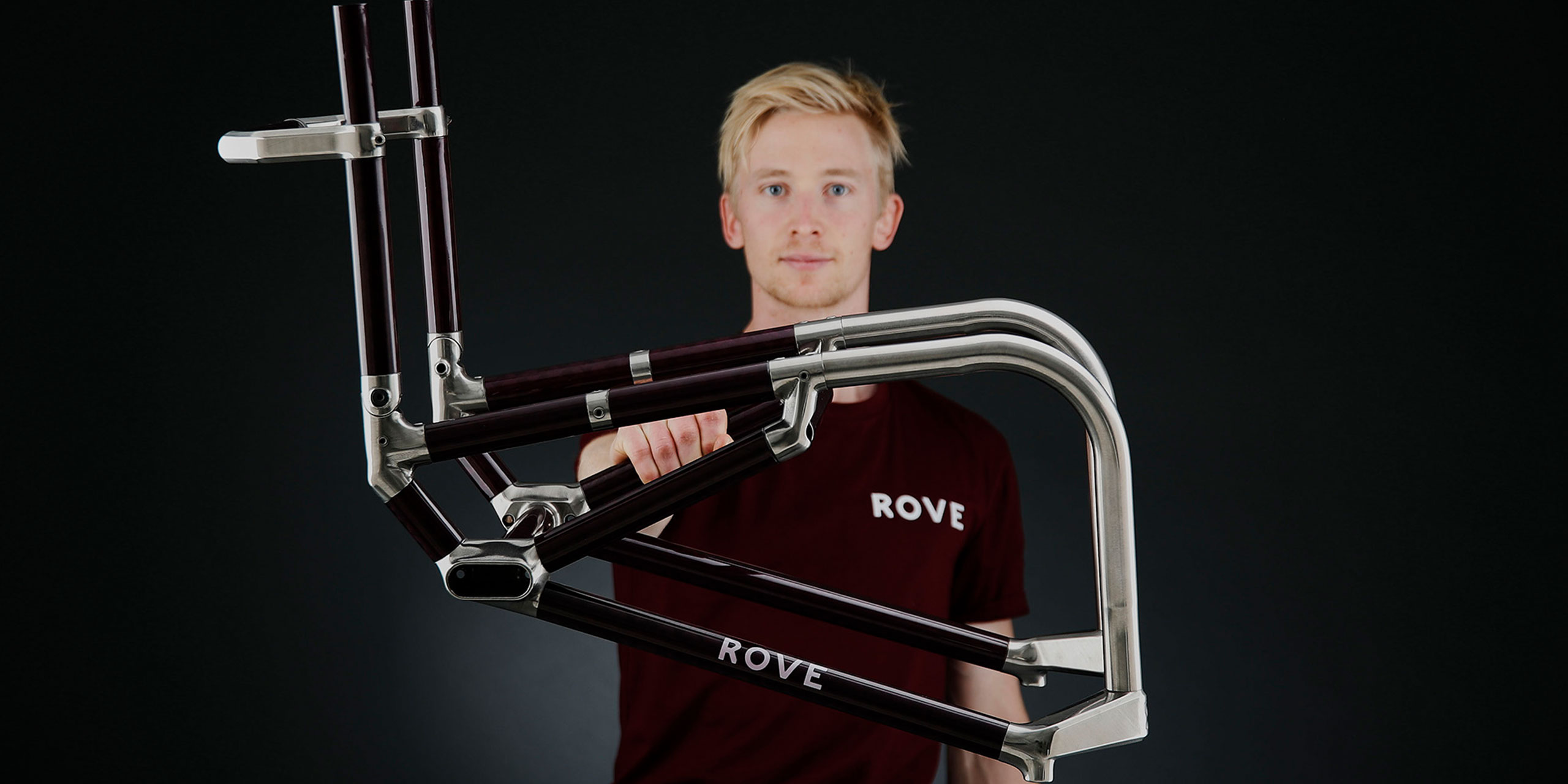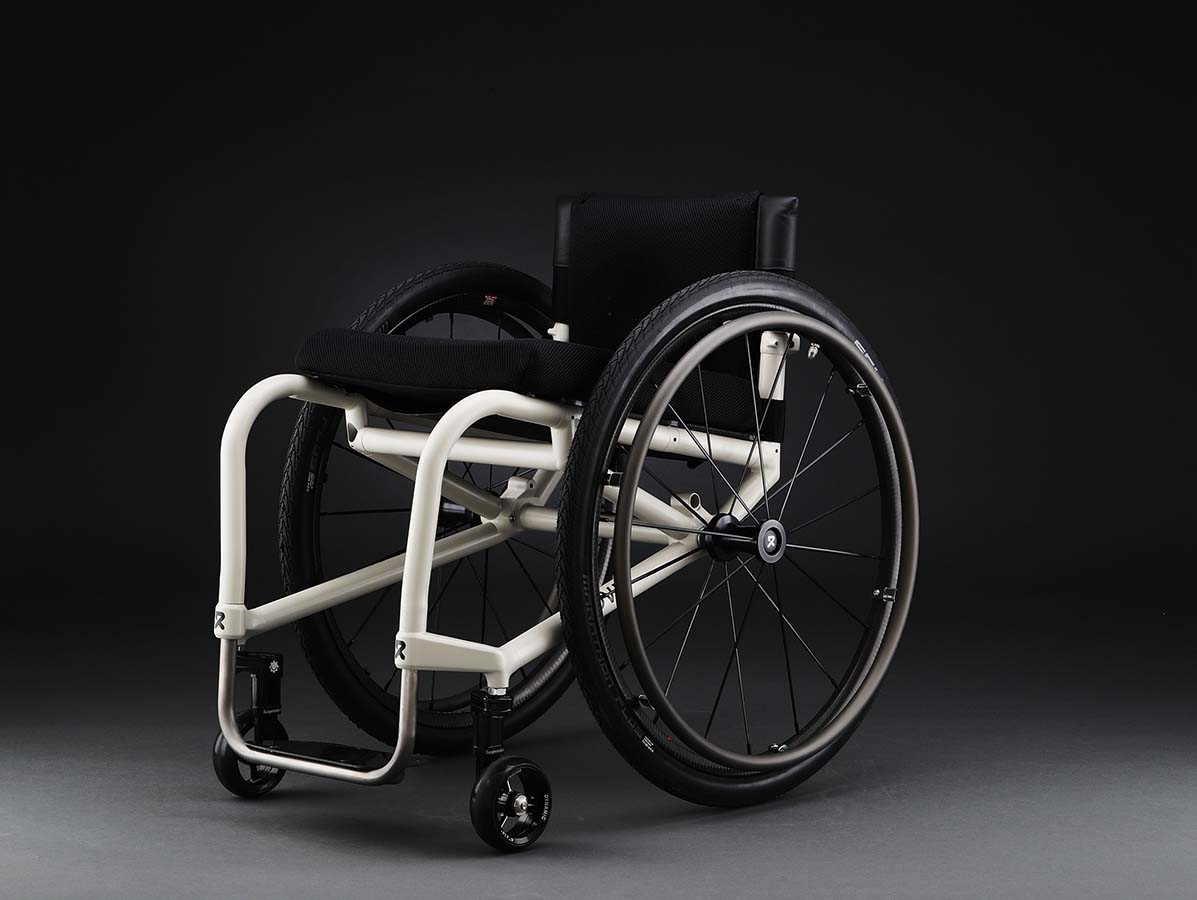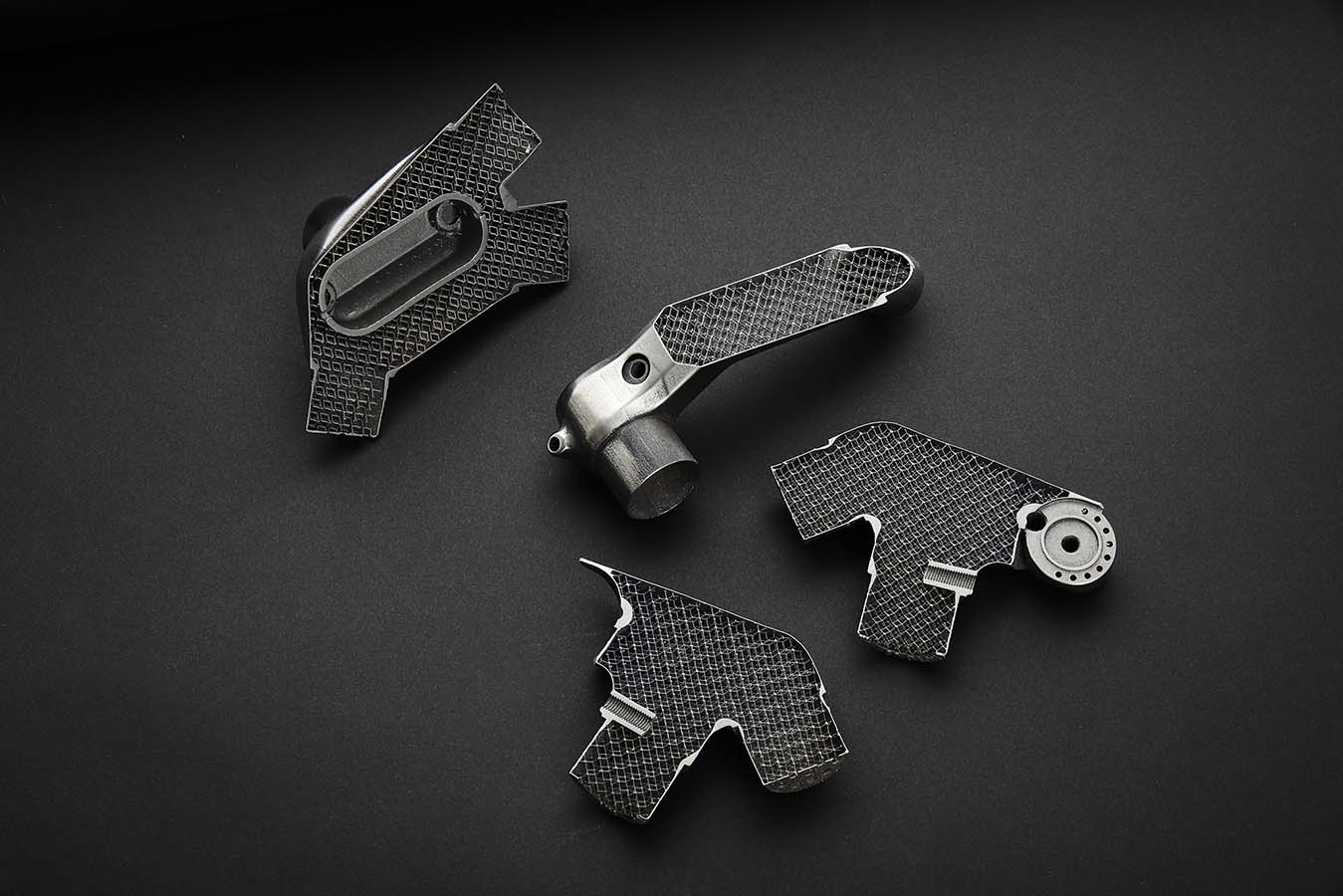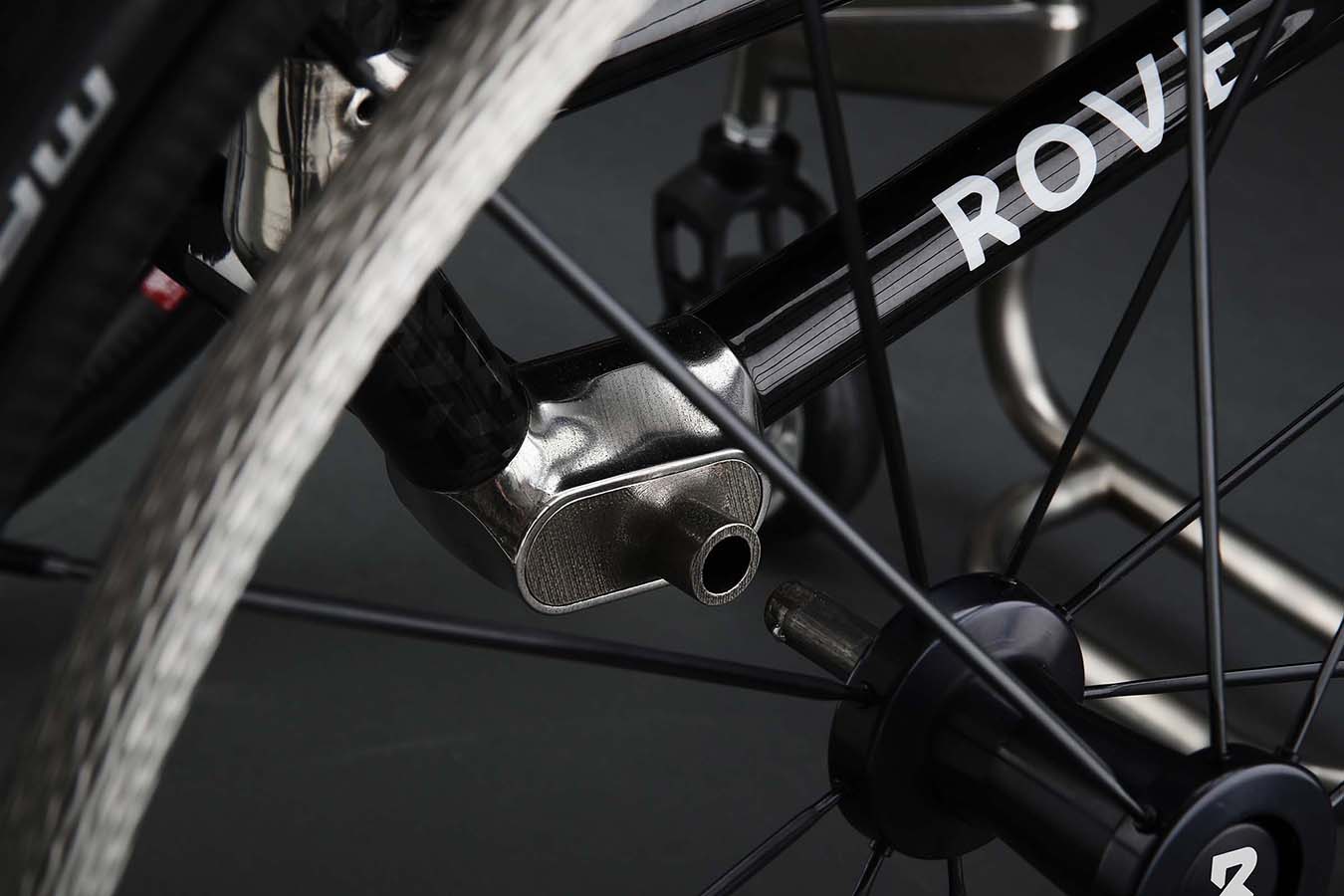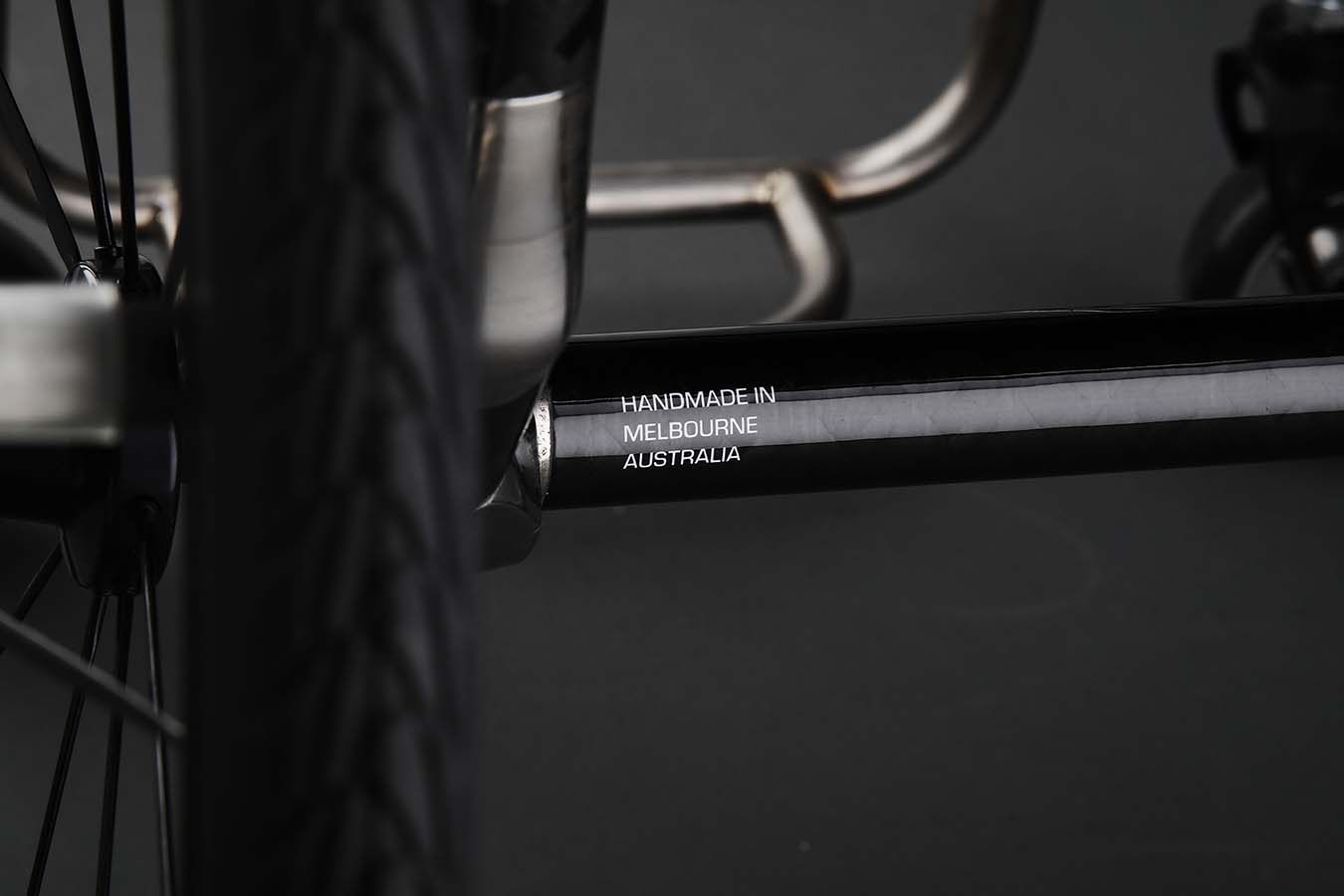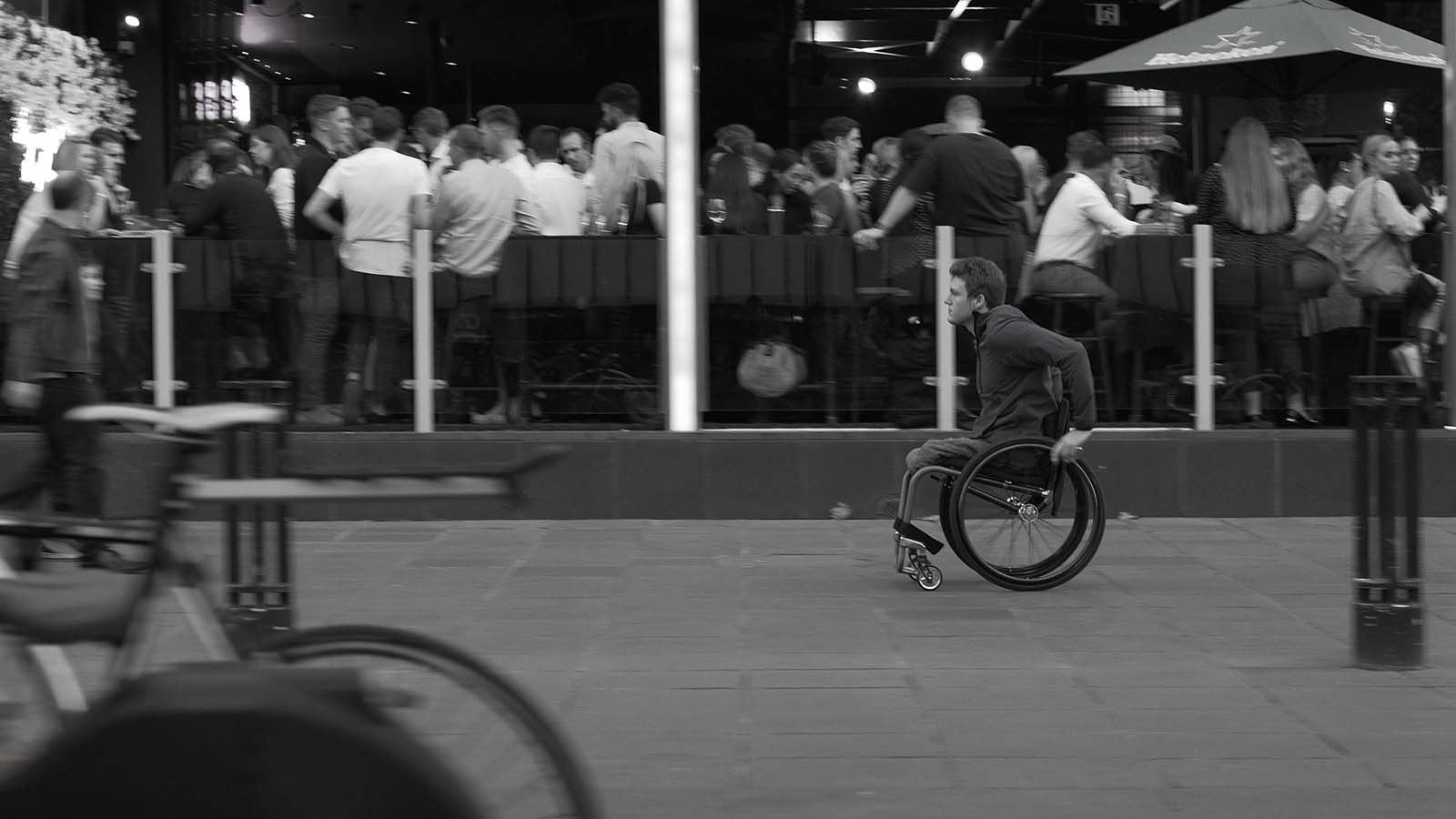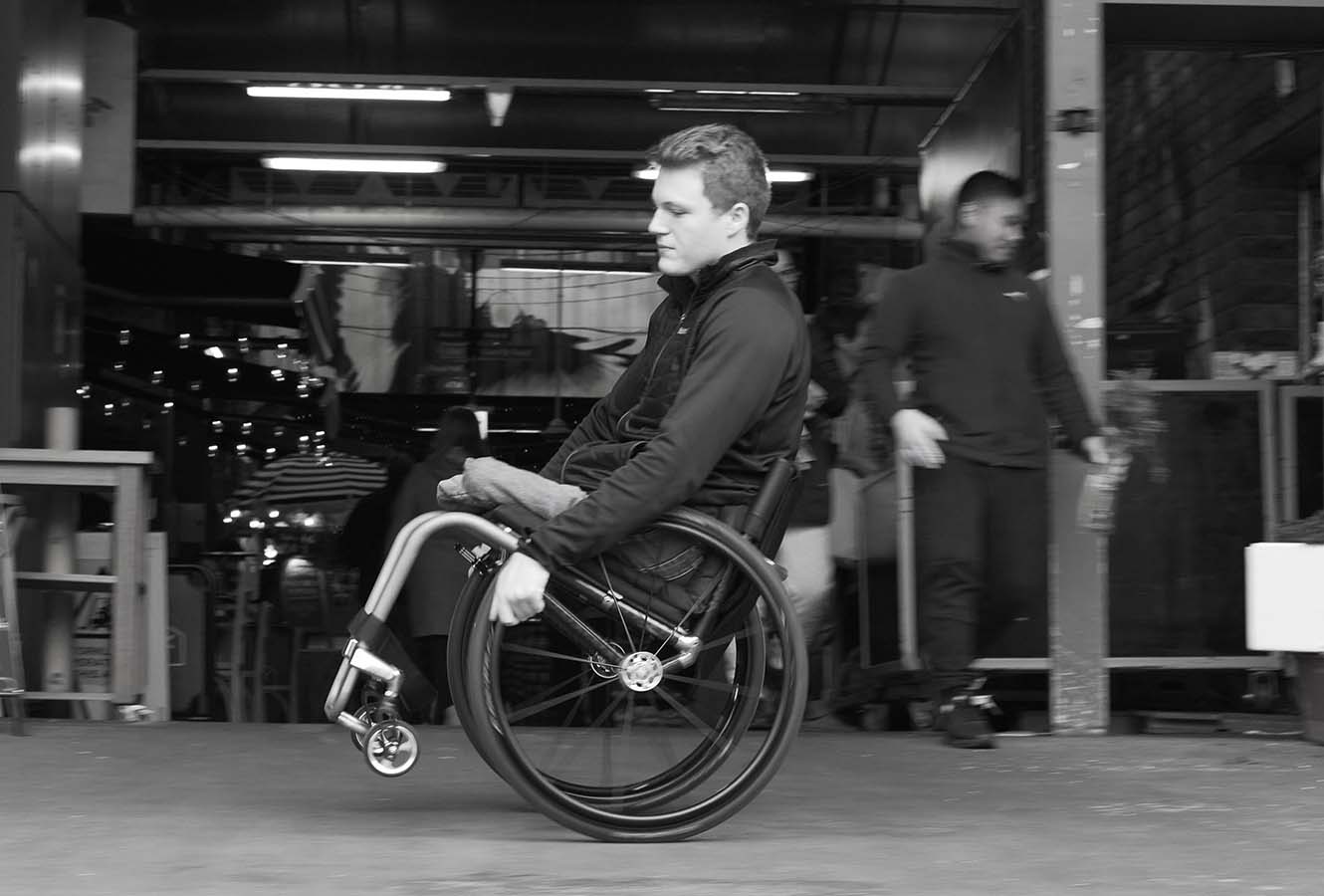The design process began with research from three key stakeholders; wheelchair users, occupational therapists and carers. This research involved online questionnaires and 1:1 interviews with over 140 people from various countries. The finding of this research informed the design direction and key focus criteria of the wheelchair. These being:
- Comfort
- Lightweight
- Durability
- Custom-Built
- Adjustability
The early research and interviews influenced many of the wheelchairs' features and options. One of these is the patented Rove ‘flipchip’ axle adjustment feature that enables an adjustable centre of gravity post-manufacture. This ensures that the wheelchair can always be the perfect fit even if the initial measurements are slightly incorrect, and also accomodate for someone’s condition changing over time ensuring that the wheelchair is suitable for longer.
All features and design assumptions were tested with a range of different wheelchair users, occupational therapists and carers using an iterative design process consisting of 12 prototype wheelchairs before the wheelchair and key features were ready for production. In final preparation for production, the wheelchair has been tested and exceeded the Australian Standards for wheelchairs for a user weight of 110kg and also has been registered with the Therapeutic Goods Administration (TGA). The Rove Wheelchair is now being manufactured in Melbourne, Australia and has had phenomenal feedback and uptake from the disability community.

